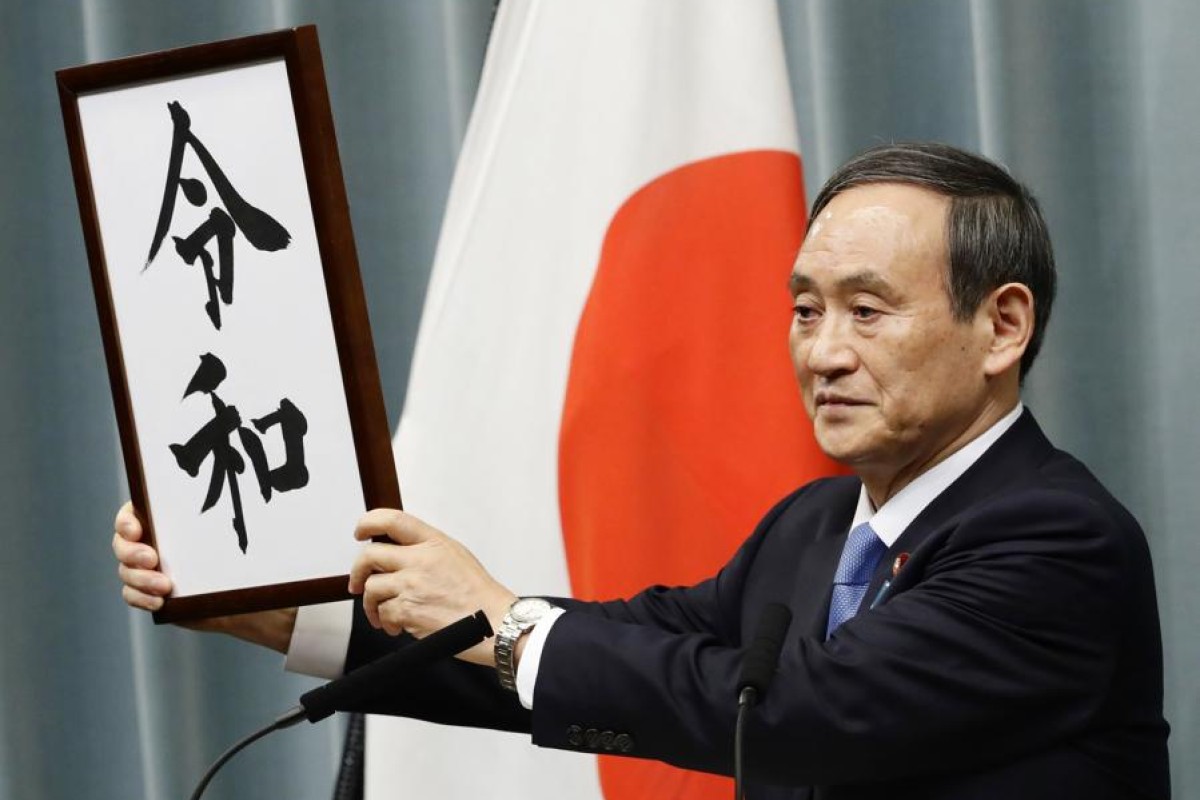 Minister Suga unveils the name of Japan’s new era.
Minister Suga unveils the name of Japan’s new era. This month, Japan’s current Heisei era will come to an end when Emperor Akihito steps down and hands over the role to his eldest son, Naruhito.
The final days of Heisei have inspired a bout of nostalgia among Japanese citizens, as they reflect on the 30-year era, and the one which will replace it – Reiwa.
Teens at Japan’s annual high school baseball tournament were asked how it felt to be the last players of the Hesei era. TV quiz shows tested contestants on their Heisei knowledge.
From a real life fairytale to an outlawed duo: The 7 greatest love stories from history
Special dolls were made to mimic the moment when Chief Cabinet Minister Yoshihide Suga announced the name of the new era. A high-end Tokyo restaurant has even unveiled a US$900 (HK$7,064) wagyu burger to commemorate the era change.
The name of the next era, Reiwa, was chosen by a top-secret committee, who spent a long time carefully looking over ancient documents to find what they considered to be the perfect two characters to describe the next several decades.
The name will appear on everything from calendars to train tickets to computer software to government documents.
Shot, starved, and married - one man's story of life during the Japanese occupation
“The era names carry this weight with them; they have this sense of defining a period,” said Daniel Sneider, a Japan expert and lecturer at Stanford University in the US.
As Heisei ends, “everything is imbued with this extra meaning. It’s the last cherry blossom season of the Heisei era. And I’m sure it will be true when the next era begins: It will be the first of everything during this next imperial era,” said Sneider, who has lived in Japan off and on since 1954. “Japanese life is filled with these combinations of tradition and modernity that some people used to find irritating ... but this insistence on sticking to tradition is what distinguishes Japan from other societies.”
In the West, decades are often used to capture the spirit of a period – the Swinging ’60s, or the Roaring ’20s, for example. Japan’s era system is a bit more like a formalised version of the way a period of time in Britain used to be named after its kings and queens, such as the Elizabethan Era or the Victorian Age.
5 historical and Instagram-worthy spots in HK you'll want to take your next selfie at
The era name once showcased an emperor’s power, but now it is more symbolic, said Hirohito Suzuki, an associate professor of sociology at Toyo University.
“It’s become something people can casually talk about, and even a topic on television quiz shows,” he said. Many younger Japanese are more used to the western calendar and so find the era name unnecessary, though some see the tradition as part of “cool Japan,” he said.
The current wave of excitement for the new name and nostalgia for the disappearing era is largely because they change so rarely.
The last one was in 1989, after the death of Hirohito, who took power in 1926. His Showa era was followed by his son Akihito’s Heisei era, which will come to an end with an unusual abdication – most emperors rule until death – on May 1.
Each era carries its own memories and flavour.
The Taisho era (1912 to 1926) was marked by an opening of society called Taisho Democracy that flourished before the rise of fascism in the 1930s.
The Japanese often remember the Showa era as a very tumultuous period: The nation moved from limited democracy to militarism and colonial expansion, beginning a war that killed millions and left behind a bitterness that is still felt in much of Asia. After the destruction of the war, the nation then emerged from US occupation as a democratic success story and, by the 1980s, a world economic titan.
Heisei, meanwhile, saw a decades-long economic slump, a crumbling of lifetime employment, and an easing of constitutional military constraints. Women and foreigners have joined the workforce in far greater numbers, though often not in decision-making positions, and, as the country rapidly ages and birth rates plunge, more and more young people have fled the farms for crammed cities.
“A lot of things have changed in the last 30 years, things that would have been hard to imagine” at the beginning of the Heisei era, said Jeff Kingston, director of Asian studies at Temple University Japan. It’s only natural, he said, that the country tries to put the closing of the era in context.
“In all nations there are certain rituals of identity, belonging and nationalism that are important to people, and the emperor is a symbol of who (the Japanese) are as a people,” he said. “Particularly when you’re facing troubled times, that becomes even more important.”
